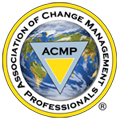Event Recap – February 2016
Change Management in an Agile Project Environment
It was amazing to have over 50 ACMP chapter members and guests join us for our “Change Management in an Agile Project Environment” panel discussion on February 23, 2016.
Special thanks to the panel members Gurinder Johal (ICBC), Steve Doherty (Steve Doherty Ltd.), Nataly Majdanac (BC Hydro) and Darren Radford (Aspire) for sharing lessons they’ve learned working on agile projects and to participants for their insights and though provoking questions. Discussion highlights included:
- Taking an “agile” project approach is about taking an incremental and interactive approach to designing and building a new product/service/technology with the involvement of key people who are close to what needs to change. Typically these types of projects will have a series of time bound/financially bound stages and each successive stage will build on the learnings from the previous stage.
- Change management principles align well with an agile project approach. Both stress end-user engagement, effective communication, customer focus, teamwork, a learner mindset and collaboration.
- As a change management professional, an agile approach will require you to be flexible and learn as you go. You won’t have the entire picture of what is changing at the outset and you have to be able to build on what you learn through the process. In a sense, you are writing the book chapter by chapter to build the overall story of what is changing.
- A culture of decision making, accountability, trust and customer-centric thinking is critical for an agile approach to work. If your organization doesn’t have these strengths, you may need to start by building those organizational competencies.
- It is important to ensure that the people working to “change the business” don’t move out of step with the people working to “run the business”. Ongoing communication and integration between the two groups is critical.
- Change management professionals are often well equipped to support agile projects as they can coach others through change, help to communicate change to employees and customers and act as a bridge between the groups of people working to “run the business” and “change the business”.
- If you’re thinking of experimenting with an agile project approach in your organization, start by having conversations about what “agile” means, assess your organizational readiness for this approach, pilot it with a small project, get momentum and practice agile skills before applying this approach to larger projects.
Thanks again to Gurinder, Steve, Nataly and Darren – and to the entire group of attendees – for sharing their insights with us!

